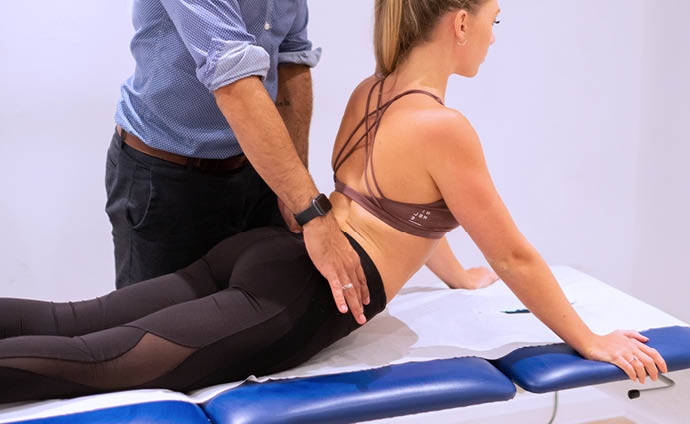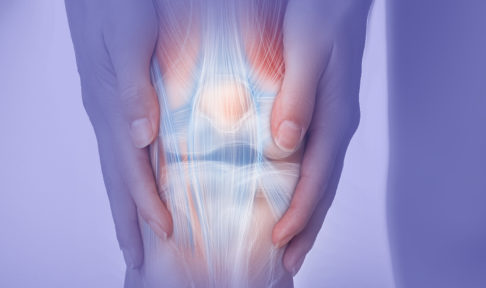If you’re suffering pain, numbness or weakness in your lower back or leg there is a chance you may have a condition called sciatica. It occurs when there is pinching in the sciatic nerve, the body’s largest and longest nerve, which runs from your lower back down through your hips, buttocks and legs, all the way down to the feet. To learn more about sciatica and other types of nerve pain, check out our recent blog on the topic.
Symptoms of sciatica
Symptoms of sciatica can include pain, numbness, altered sensation or weakness in the areas of the leg that are supplied by the sciatic nerve. Because the nerve originates in your lower back, sometimes an issue with the sciatic nerve can have its root cause in your back, even if the symptoms are displayed lower down in your leg. From time to time during treatment of sciatica, centralisation can occur. Centralisation is when the pain furthest from the source goes away soonest (in the case of sciatica, if the root cause is in your lower back, the pain in your lower legs would disappear faster then in your thigh or hips). But the trade off for this is that the central pain can get worse as the further away pain decreases — it’s a good thing because it shows the treatment is working, but isn’t much fun if it happens!
So now we know what sciatica is and what the symptoms may look like, how is sciatica actually treated by a physio?
Get assessed
The first step of any good physio treatment plan is a thorough assessment. Without understanding the different variables of your leg pain, it’s impossible to know for sure whether it’s sciatica or something else — from another type of nerve pain to something entirely different. Through a series of questions and guided movement, your physio will be able to determine whether or not they think you are experiencing sciatica and if you are, one or more of the following treatments may be prescribed.

McKenzie Therapy
If your sciatica has its origin in your back, McKenzie Therapy is a very effective treatment method. Ant Brightwell, one of Spectrum’s lead physios, is one of very few fully qualified and registered McKenzie therapists in London and has years’ of experience treating back issues using this methodology.
McKenzie therapy is a system of analysed repeated movements, that can be used to relieve pain or improve mobility that has been caused by a musculoskeletal injury or condition. The methodology consists of four main steps: assessment, classification, treatment and prevention.
One of the key benefits of McKenzie Therapy is that, over time, you will gain experience in doing the movements and poses prescribed to you by your physio, so will be able to do them without having to always come in for appointments. This means you have a much higher level of control over your own treatment and can perform the movements as often as six times per day if you want to!
TENS
A TENS machine is a type of electrotherapy treatment, which is sometimes also referred to as Transcutaneous Electrical Nerve Stimulation. It is commonly used as a nerve pain relief treatment, but can also work to decrease muscular tension and inhibit overstimulation.
A TENS machine treats sciatica by sending a small electrical current from the back to the brain. Electrodes (pads) from the machine are applied to the skin above where the pinched nerve sits, and a level of current and intensity is then selected by your therapist in order to effectively treat the nerve. The electrical currents will help reduce the sensation of pain by blocking the messages from the sciatic nerve, provoking the release of endorphins and relaxing the nerve.
Manual and exercise therapy
Structurally changing what is happening in your sciatic nerve is going to be the most effective way to ensure your symptoms are gone for good. This can be achieved through manual physio work like soft tissue release or joint mobilisations. Manual therapy is delivered with the hands, as opposed to a device or machine and the physios at Spectrum are experts in musculoskeletal systems. In the specific example of sciatica where you have a pinched nerve, manual therapy can help to remove the obstruction.
If manual therapy is then complemented by exercise therapy, it’s likely that your recovery will be much quicker. At Spectrum we have our own specialised gym in the London clinic, so there is so much more that you can do than just pilates! Similar to with McKenzie Therapy, it will also mean that you will have the ability to self-manage your treatment a lot better and can also be used as maintenance or prevention once your initial sciatica settles down.
No matter what mix of treatments are right for you, the team at Spectrum are here to figure out your personalised plan, to have you nerve pain-free and with full mobility in no time!
Are you suffering from leg or back pain and think it may be being caused by nerve pinching? Book an appointment at Spectrum today and our experienced team would love to help.



